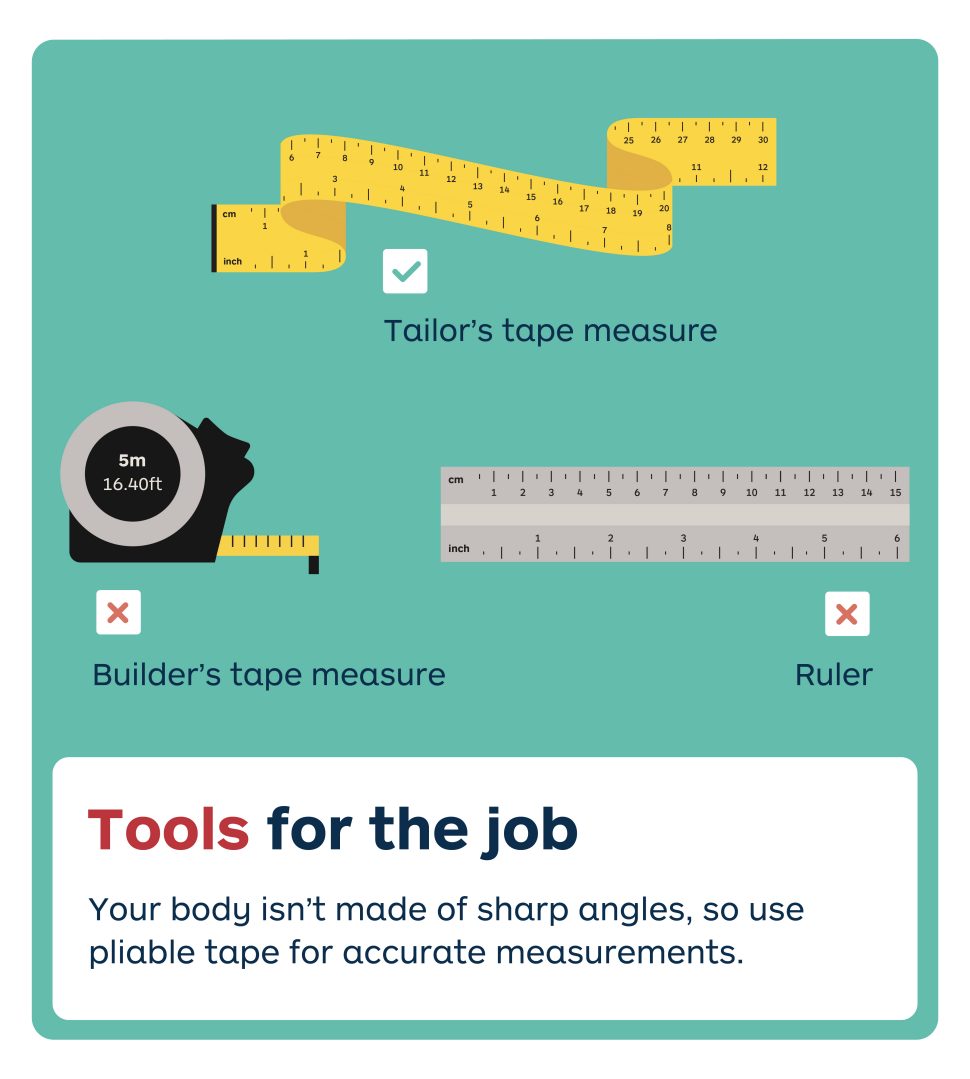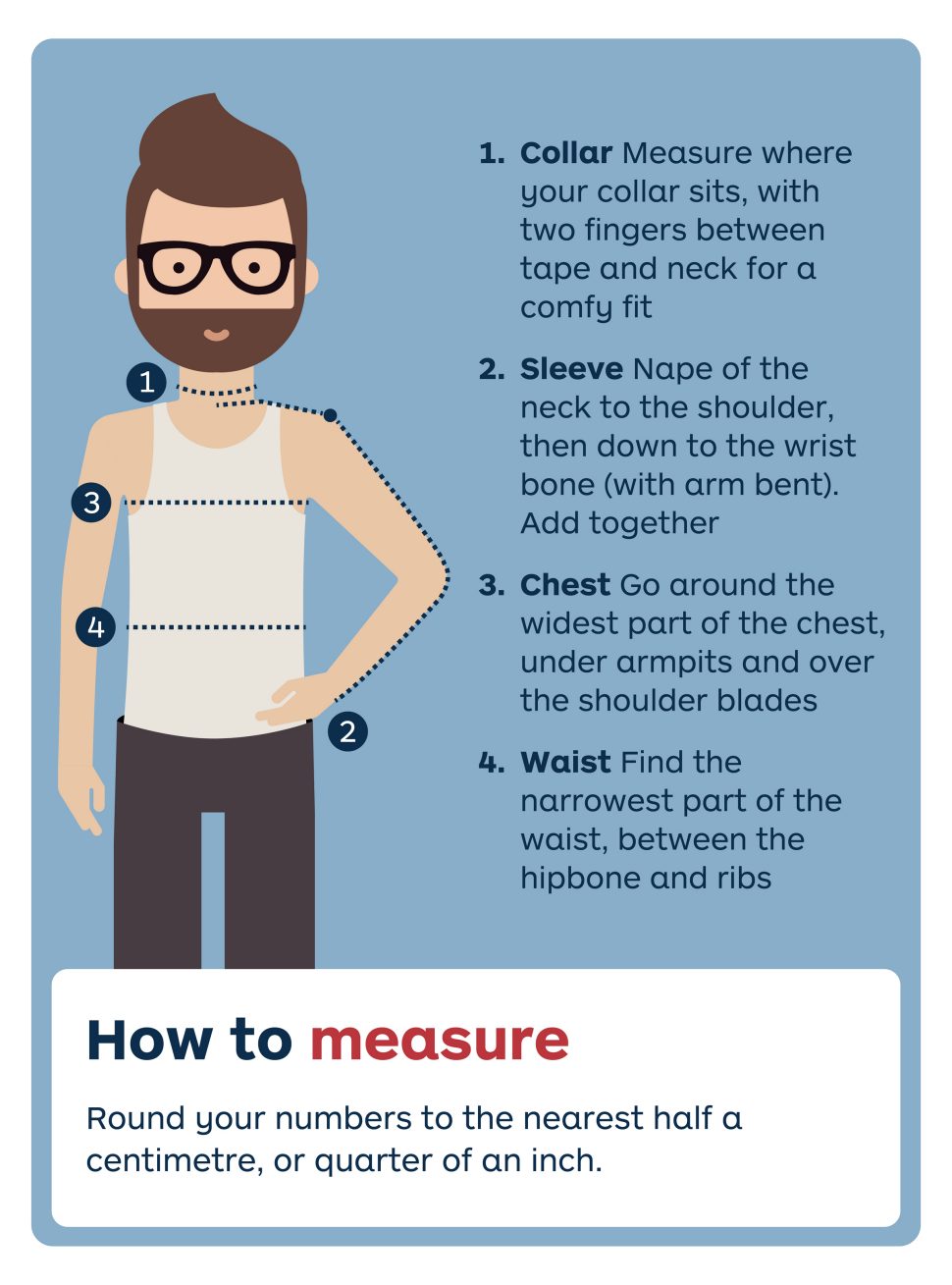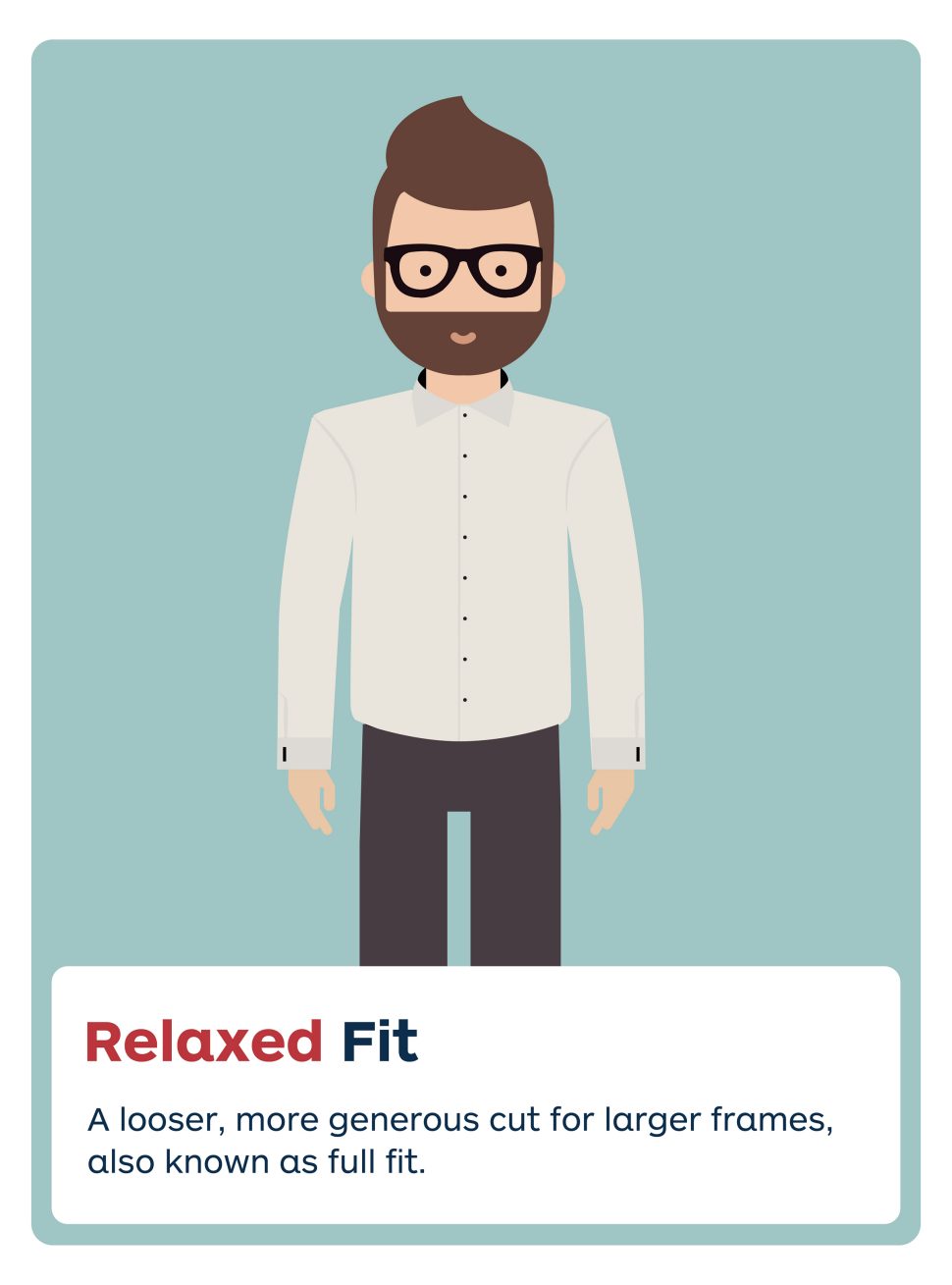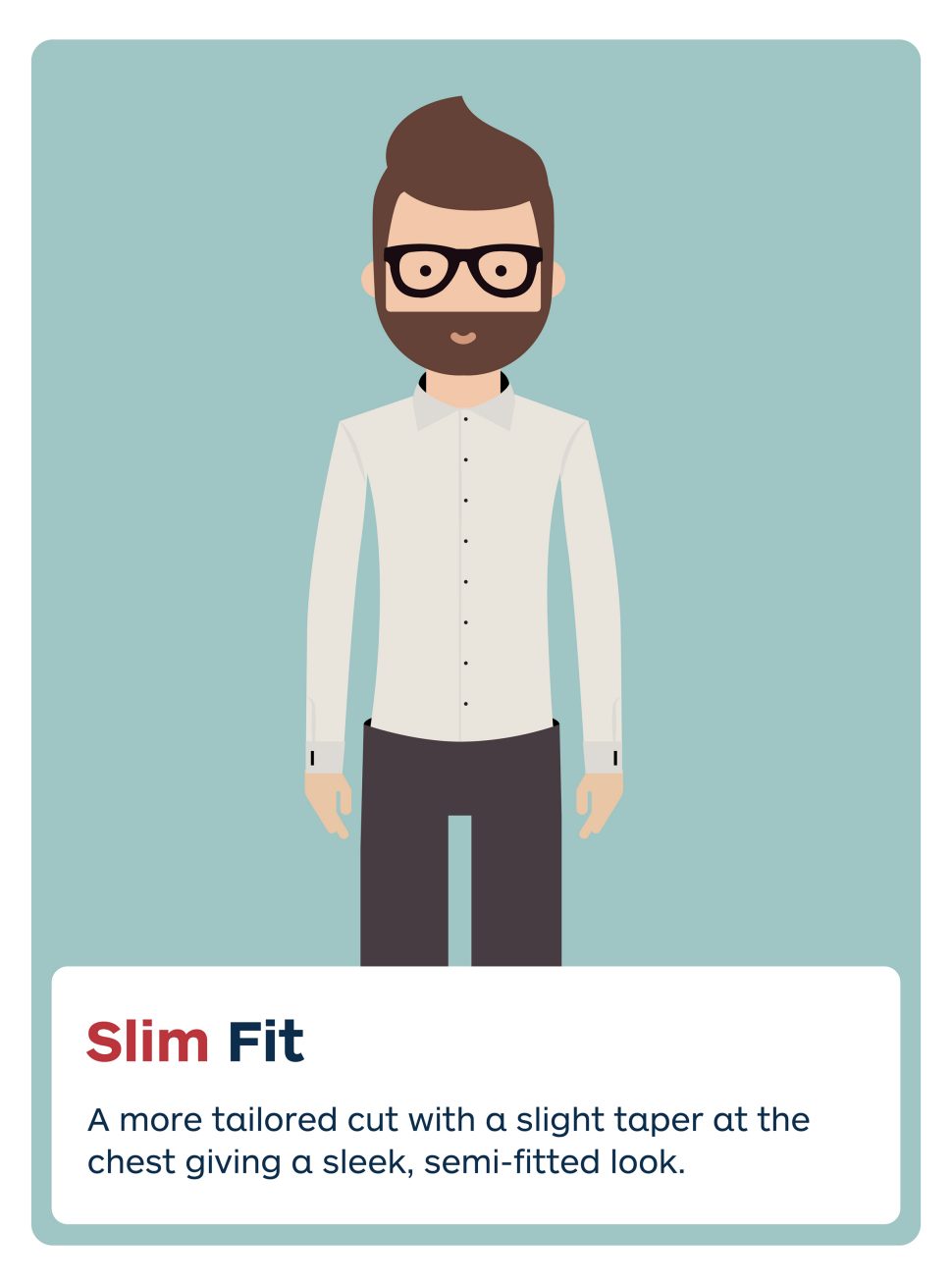Guys, here's the ultimate guide to finding a great fitting shirt

How do I find my shirt measurements?
Those numbers and letters actually refer to the neck measurement (in centimetres and inches, respectively), but size guides usually provide a bunch of other dimensions for reference. The best tool to work out yours is a tailor’s tape measure. While it’s not impossible to do it yourself, you’ll get a more accurate reading if someone pitches in.
Neck
Also referred to as collar size, wrap the tape around your neck where a shirt collar should sit. Slip a couple of fingers between your skin and the tape so you get a comfortable fit that isn’t too snug.
Sleeve
Another key dimension, the sleeve, requires two measurements. First, go from the nape of the neck (the middle top of your back, under the hairline) to the outer edge of your shoulder. Next, from this shoulder point, measure down the arm to where the shirt cuff would finish, usually just before the wrist bone. Bend the elbow slightly for this one or you’ll end up with too-short sleeves when you move your arms. Add these measurements together for your sleeve length.
Chest
Wrap the tape around your torso, making sure it runs just below the armpit and over the shoulder blades. The tape should go across the widest part of your chest and sit flat on the skin—twists and kinks will give a false reading.
Waist
Find your natural waistline, which is different to where you’d measure the waist for pants. It’s the narrowest part of your waist, between the bottom of the ribs and above the hip bone.

How is the fit of my shirt different to my size?
To understand the distinction, think about size as being about you and your measurements, while fit is about the shirt and how it’s cut. So a brand can sell a shirt in your size but offer it in a range of fits.




What else should I look out for when buying shirts online?
Helpfully, online retailers often include other terminologies and information to give clues as to how their clothes fit.
True to size
This phrase means pretty much what it says on the box: the sizing of the garment is typical of the size indicated... so a small is a small, no mysteries.
Runs large
If you’re usually, say, a medium shirt and you see these words, the brand is letting you know their clothes are made a little bigger than standard, so you may want to try a small instead.
Runs small
No prizes for guessing that this indicates sizing smaller than standard, so go up a size from what you’re accustomed to.
Fabric composition
This is important information many online shoppers overlook. Even if it’s the right size, colour and style, fabric will impact how a shirt looks and feels. Is it made from natural fibres (think cotton, wool, bamboo, linen, et al), synthetics (rayon, nylon, acrylic, acetate, et el) or a blend of the two? While 100% natural fabrics are often considered superior for feel and breathability, manmade fibres are added for many reasons: to add stretch (important if you prefer a slim fit and like to be able to move), for durability (synthetics are often stronger than cotton, for instance) or to cut costs. Synthetics have improved greatly since the days of coarse, scratchy polyesters but having a natural fibre component is ideal.
Textile weave
How a shirt cloth is woven is an important detail to consider. A weave such as herringbone (a smooth zig-zag style, sometimes with a slight sheen) looks a little dressier for the office, while an Oxford (basket style weave) is often seen in more casual shirts. Think about the weather also—Oxford is a thicker, warmer weave, while poplin is light and cool. There are many kinds of weave, a quick online search should explain the characteristics of each.
What about those other little details?
You may well think that once you’ve chosen the correct size, you’re happy with the fabric and like the cut, you’re ready to head to the online checkout. Not so fast…
It’s always a good idea to pay attention to the other details. Shirt collars can vary greatly, from a classic (a safe bet), spread and semi-spread (wider point-to-point), button down (a more casual look), wing tip (a formal style for bow ties) or club (rounded points).
Then there are cuffs, which may be single and fasten with buttons, or double cuffs (also called French cuffs), which fold over and require cufflinks. Some online retailers allow you to personalise these sorts of details or add breast pockets. And really, that all comes down to personal taste and how dressy or casual you want your shirt to be.
Home isn't your only delivery address
With over 4,000 alternative addresses to have your parcel sent to, you can choose a location that’s most convenient to you. Choose a free 24/7 Parcel Locker, a Post Office or your PO Box.
